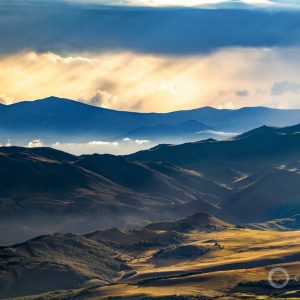Quest For Gold in Peru Met With Fierce Protests Over Water
Opposition campaign, occasionally violent, prompts end of disputed mine.
Story By Keith Schneider
Photographs By J. Carl Ganter
Circle of Blue – December 15, 2016
The day we arrived in Cajamarca, a 500-year-old Spanish colonial city of 225,000 residents in Peru’s northern Andes mining region, a parade and demonstration blocked the narrow streets. All afternoon and into the lengthening shadows of dusk 5,000 highland farmers and their children marched around Cajamarca’s central square. They sang songs of protest and carried big banners that described fervent opposition to the proliferation of mammoth gold and copper mines in their homeland.
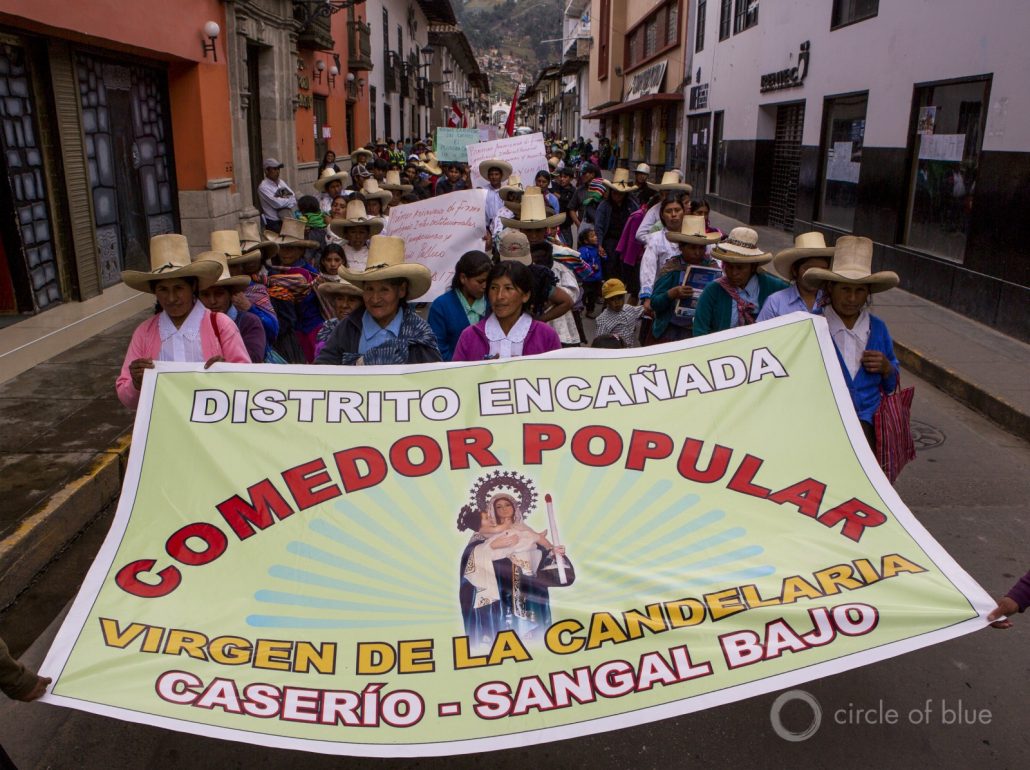
Campesinos demonstrated against the Conga mine in Cajamarca in June 2014.
It was an impressive and peaceful display of unity and strength in a decade old protest campaign over land and water that has divided the region’s leadership and business community and has periodically turned ugly.
On November 29, 2014, a few months after our trip, at least 24 protestors were injured during a demonstration against the Conga mine, according to EarthRights International, a human rights organization. One of the injured was Elmer Eduardo, a 33-year-old farmer who was shot in the back and paralyzed from the waist down.
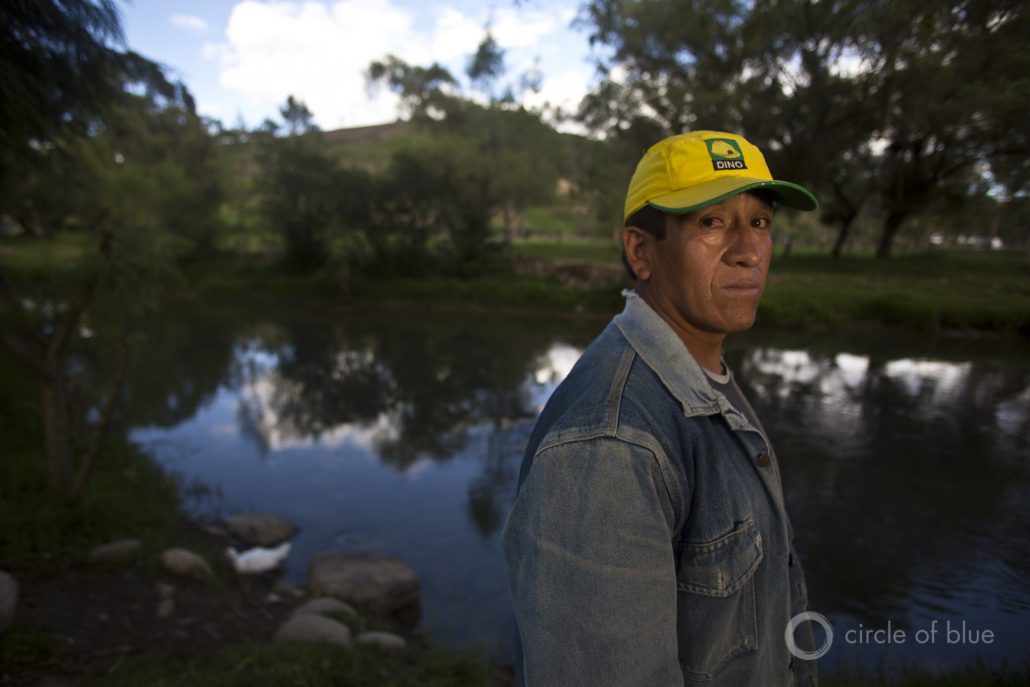
Farmers in Cajamarca fear water contamination from mines upstream from their lands.
Chief among the campesinos’ concerns was water. The farmers live among streams and lakes that have not already been polluted or diverted by the mines and are still pure enough to drink.
Their top targets in the protests were Newmont Mining Corporation, the big American company, and Buenaventura, Peru’s largest mining outfit. Both companies collaborated in the early 1990s to open the mammoth Yanacocha gold mine south of Cajamarca, the largest open pit mine in Latin America. Both companies proposed to invest US$5 billion on the even larger Conga gold mine nearby.
Since 2004, when the Conga mine proposal became public, campesinos fought hard to protect the high Andes grasslands and water supplies. They blockaded roads, demonstrated at the entrance to the Yanacocha mine, and marched in the streets. Security forces, dispatched by the national government or supported by the mine, confronted demonstrators. During a 2012 protest, four demonstrators were shot and killed.
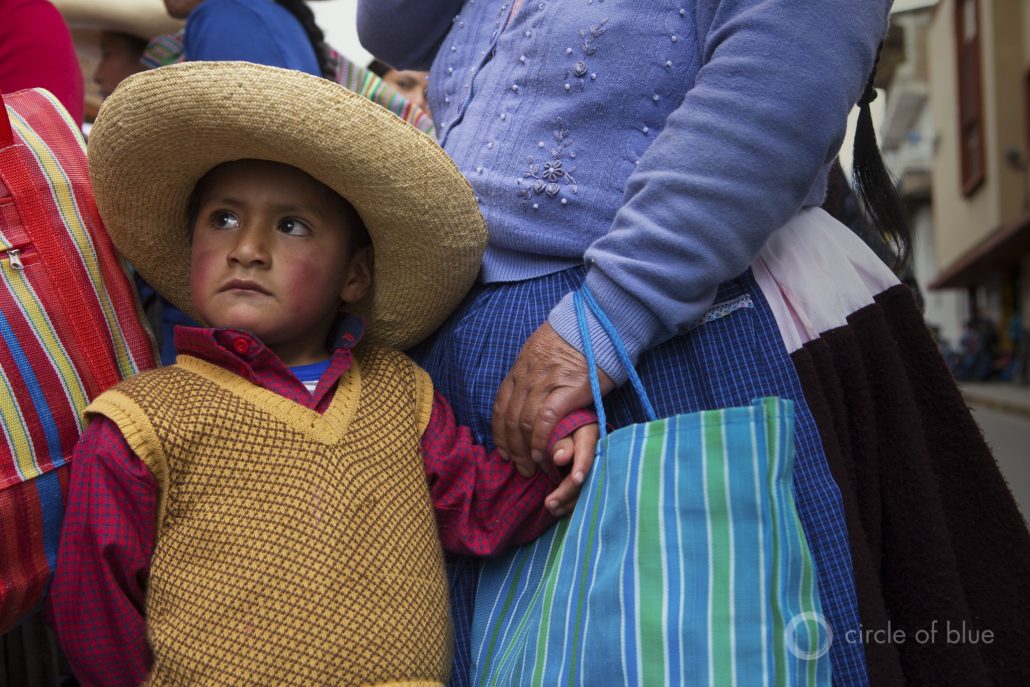
Andes highland farmers and their children marched in the streets of Cajamarca in opposition to the Conga gold mine.
The violence, and the response to it by government and the companies, formed a new entry on the timeline of global mineral development, a signal of transition in the industry comparable in magnitude to the discovery of gold nuggets in 1849 California.
President Humala, acted to bring tens of thousands of informal illegal gold miners into compliance with environmental laws to halt water pollution and land degradation across Peru.
In Peru, former President Ollanta Humala, who was elected in 2011, in part on a message of “water over gold,” guided new water quality and supply legislation to enactment. The law established an independent permitting agency, the Ministerio del Ambiente, to review environmental documents and approve or reject new mines and other industrial operations.
President Humala, who left office in July because of term limits, also acted to bring tens of thousands of informal illegal gold miners into compliance with environmental laws to halt water pollution and land degradation across Peru. The Ministry of Energy and Mines estimated that 100,000 such mines operate outside the law in Peru, and produce an estimated 25 percent of the country’s gold. They also cause much more havoc to water and the environment, the agency said, especially in the Amazon, where tens of thousands of square miles of forest have been ruined and toxic chemicals have poisoned the water.
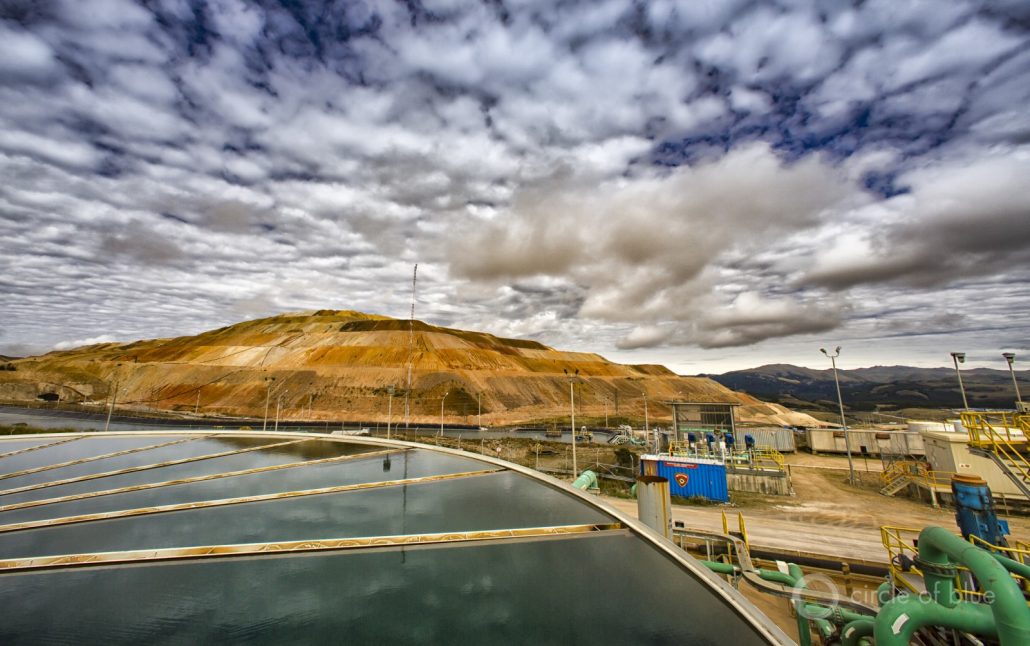
Water treatment equipment at the Yanacocha mine supplies clean water to neighboring communities, and to streams and rivers. The company operates a closed loop, discharge-free system that collects, treats, and recycles the cyanide-saturated water it uses to leach gold from giant ore piles.
For its part Newmont employed over 4,000 people at Yanacocha as recently as 2014. Since 2003, when it built a sediment control system, Newmont has approved over $US 100 million more in upgrades to Yanacocha’s water collection, treatment, and discharge systems. They provide ample supplies of clean water to neighboring communities, and to streams and rivers. The company operates a closed loop, discharge-free system that collects, treats, and recycles the cyanide-saturated water it uses to leach gold from giant ore piles.
Its community relations division installed storage ponds and irrigation systems that dramatically improved crop yields of more than 300 farms around the mine’s boundary.
The contest for water between the mining industry and the campesinos remains fierce.
Such practices earned Newmont recognition as an industry leader in environmental conservation. In 2007, the company was first named as a top performer in sustainable economic, environmental and social performance in the Dow Jones Sustainability World Index. In September, for the second year in a row, the Dow Jones index identified Newmont as the mining industry’s overall leader in sustainability.
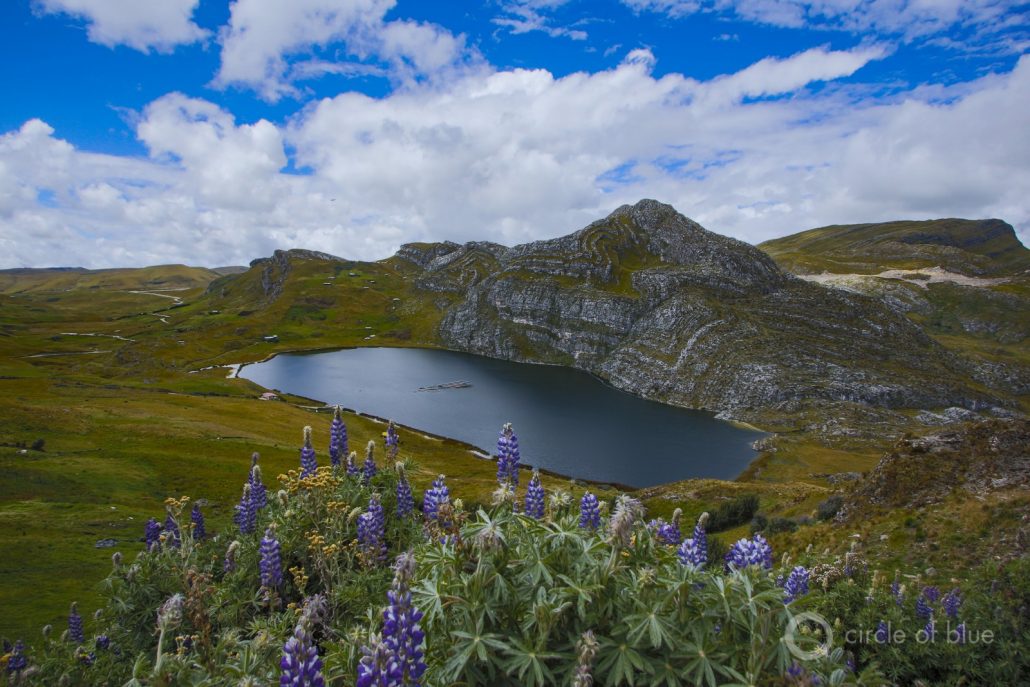
This lake, and much of the highland grasslands and ridges seen from this view of the Andes would have vanished with development of the Conga gold mine. Newmont has indefinitely suspended construction of the mine following more than a decade of protest.
But in Cajamarca, industry laurels hold little sway. There, the contest for water between the mining industry and the campesinos remains fierce. One reason is that the leaders of the Cajamarca Regional Government, who’ve been in power since 2010, ardently oppose gold mining. Gregorio Santos, the former president of the Cajamarca Regional Government, led the 2011 protests that shut down construction of the Conga mine.
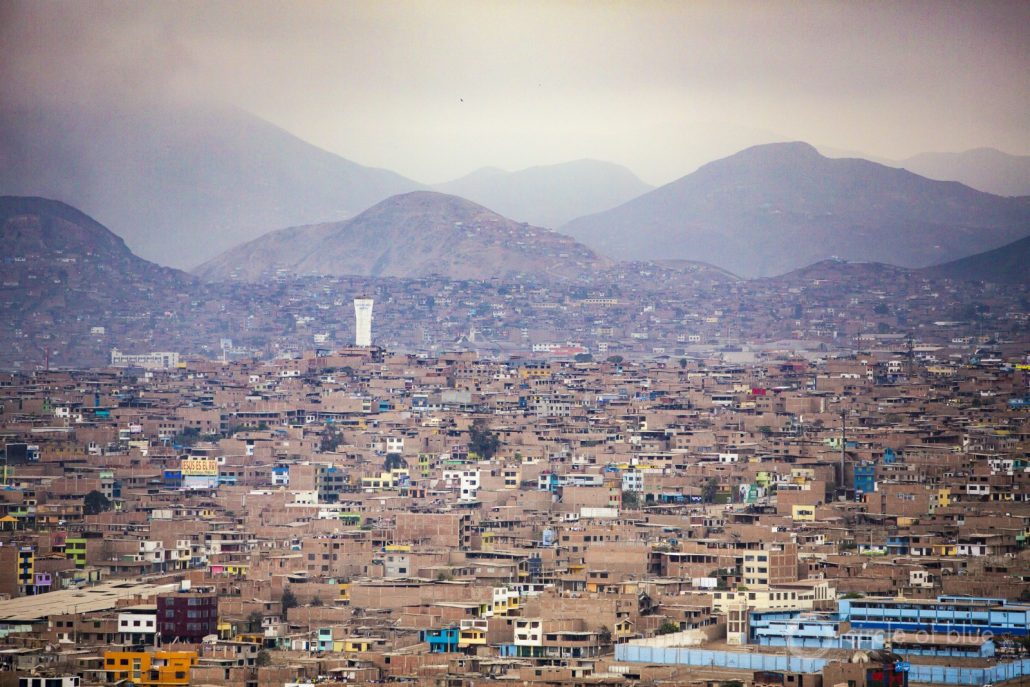
Cajamarca, a northern Andes mountain city of 225,000, is the center of Peru’s northern mountain gold mining region.
“The places that supply our water are in those mountains where the mines are,” Cesar Aliaga Diaz, who briefly served as the regional president and now directs the regional government’s Social Development Division, told us in an interview.
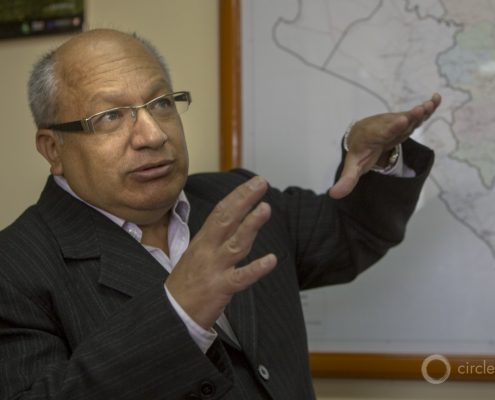
Cesar Aliaga Diaz © J. Carl Ganter/CircleofBlue.org
Diaz said this while outlining Cajamarca’s watersheds on a big map in his office. “Our regional government passed a law that says these places must be protected. Our national government says we have no local control. We have different points of view, but the Andes people support us.”
Business leaders in Cajamarca told us they were exasperated by the regional government’s anti-mining tilt. Dr. Jiefer Diaz Navarro, a physician and president of the Cajamarca Chamber of Commerce, said after Newmont suspended operations at the Conga mine in 2011, some 10,000 mining jobs left the region. He said 40,000 other jobs connected to mining revenue – service workers, mechanics, suppliers, drivers – also vanished. Unemployment rose to over 20 percent, almost three times higher than the national average, and seven times higher than when the Conga mine was under construction.
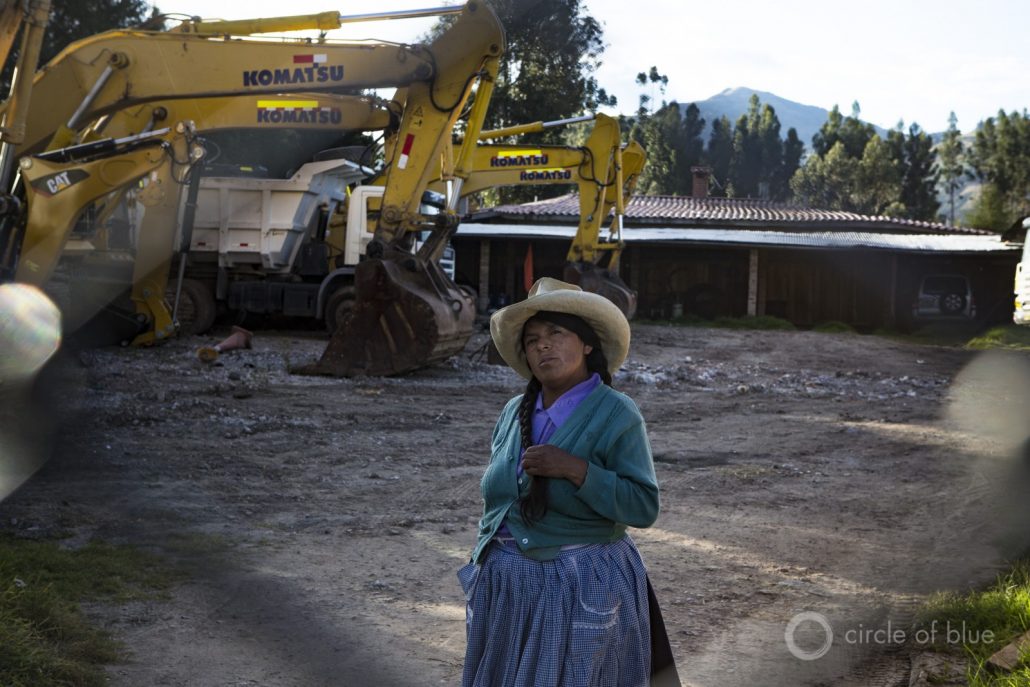
After Newmont suspended operations at the Conga mine in 2011, Cajamarca slipped into recession. Idle mining equipment was stored in depots.
The city’s economy slipped into a deep recession. Heavy mining equipment, newly purchased, gathered dust in storage sites near the city’s airport. A third of the mid-level and larger companies that belonged to the Chamber went out of business. Political conflict, said Navarro, hurt tourism.
“It’s enough,” Navarro said. “Gold mining can be done here in a responsible way that makes it possible for us to have good water. Responsible mining is good for us. It’s good for our companies. “
That sentiment was not shared by the majority of residents of Cajamarca and the region two years ago. In October 2014 when Gregorio Santos was re-elected, winning over seven other candidates for regional governors who supported an expansion of mining. Santos won easily even though he had been charged with corruption and was jailed in June 2014. Gregorio did not serve his second term and was released in July. His successor also opposed mining.
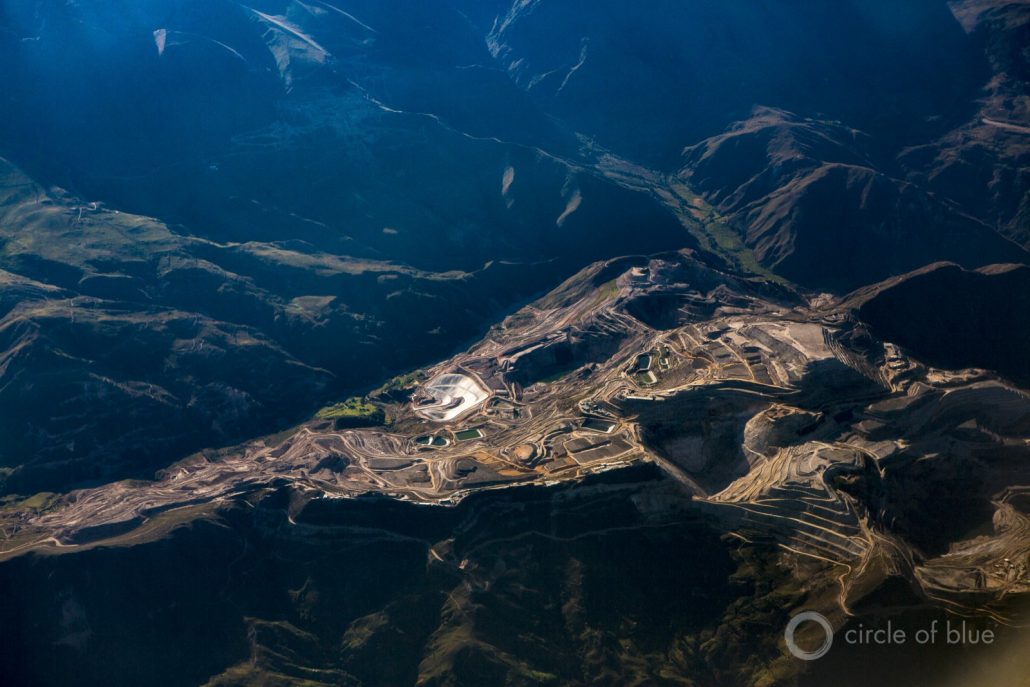
The Andes range north of Lima also is one of the planet’s most active regions for public opposition to big open pit mines. Twenty mine projects are stalled in Peru due to low prices, water-related stress, and public opposition.
In February 2016, Newmont filed a U.S. Securities and Exchange Commission financial disclosure. It announced that Newmont had suspended development of the Conga mine indefinitely.
Related
© 2023 Circle of Blue – all rights reserved
Terms of Service | Privacy Policy


